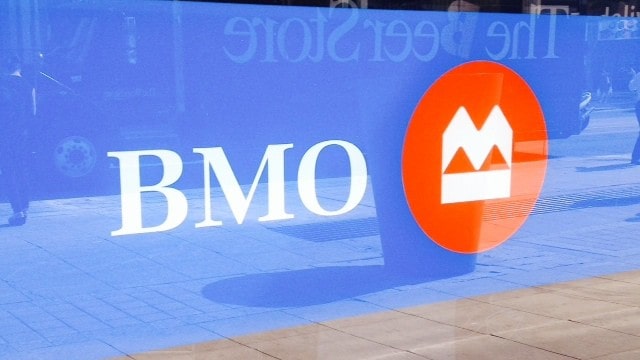Any time a blue-chip stock like Bank of Montreal (TSX:BMO)(NYSE:BMO) gives up over 11% in value, investor interest will be piqued. And that’s exactly what happened from March to June. And although shares are up close to 5% since the beginning of the month, there is still an opportunity to get shares at a discount from the bank’s all-time high.
But just because you can buy, does that mean you should? Let’s take a look at some of the numbers to help make that determination.
What sent Bank of Montreal tumbling to begin with was concern that its United States operations were starting to slow down. A big reason that shares had originally shot up is because it has a strong presence with about 600 branches that operate under the name BMO Harris Bank.
Unfortunately, the bank experienced some pain in the previous quarter. Credit losses were up by US$29 million to US$68 million. Further, average net loans and acceptances were down $1.1 billion. This led to its U.S. division reporting a 7% drop in adjusted net income.
Another factor that has contributed to Bank of Montreal’s pullback is general concern about the Canadian housing market. Ever since the Financial Crisis, this has been a favourite topic for analysts to talk about; everyone is calling it a bubble. And in some respects, it is a bubble.
However, it would take a true disaster for BMO to experience significant pain from its housing loans. It has $104 billion in Canadian residential loans on the book with 55% of the portfolio insured. Although home prices will inevitably drop, the drop should be gradual rather than extreme, minimizing any shock that the bank experiences.
What’s incredible is that a lot of this overreaction is not grounded in fundamentals, but rather in emotions.
As a whole, the bank had a strong quarter. Adjusted net income was $1.29 billion, up 12% from Q2 106. Its adjusted earnings per share was up 11% to $1.92. And, most importantly, its adjusted return on equity was 13.1% — up an entire percentage point from the same period in 2016. Any time a bank sees a stronger return on equity, my interest is piqued.
So, with all of this information in mind, what should investors do?
Although the bank bottomed out at about $90 a share and has since started to rise again, it’s still down over 7.5% from its all-time high. On top of that, the bank increased its dividend by two cents to $0.90 per quarter. This gives it a yield of 3.77%, which is pretty much in line with what its competitors are paying.
I believe that investors overreacted to the news of its U.S. division not generating as much income and, more importantly, that their concerns about the housing market cratering are unfounded. But their fear is your opportunity to pick up shares at a discount from their all-time high. And getting a dividend from a company that has paid a dividend since 1829 is a pretty solid opportunity.
 Don't Miss AI's Third Wave
Don't Miss AI's Third Wave








